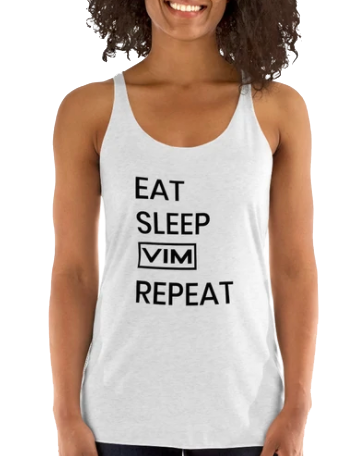Adapted from Amy Shah, M.D. Greatist.com
Since everyone and their cat (literally) is on a special diet, you might wonder if you, too, have a food allergy or intolerance.
After all, you do sometimes feel a little bloated when you eat dairy, and gluten, and vegetables… It feels like everything is off limits!
Luckily there is a relatively easy way to figure out if you have a food intolerance. You can try out this plan before resorting to expensive blood tests or extreme cleanses.
But Should You Try This?
• Before beginning any restrictive diet, it’s important to have an idea if you have a food allergy or a food intolerance. If, immediately after eating certain foods (in even microscopic amounts), your throat tightens, you get hives, or you experience anaphylaxis (a type of total-body shock), consult a board certified allergist, as that may be a food allergy—and that’s not something to self-diagnose.
• On the other hand, symptoms like constipation, headaches, heartburn, fatigue, bloating, or difficulty swallowing may be a food intolerance. Sometimes this will get worse one to three hours after consuming a food, but often the timing makes it unclear if it’s diet or something else causing your problems.
• Food challenges—where you take out a food out and then add back in to see if it causes symptoms—are considered the “gold standard” for diagnosing intolerances. Blood and skin testing can often give false or confusing results, so after those, sometimes doctors recommend a food challenge to confirm the sensitivity.
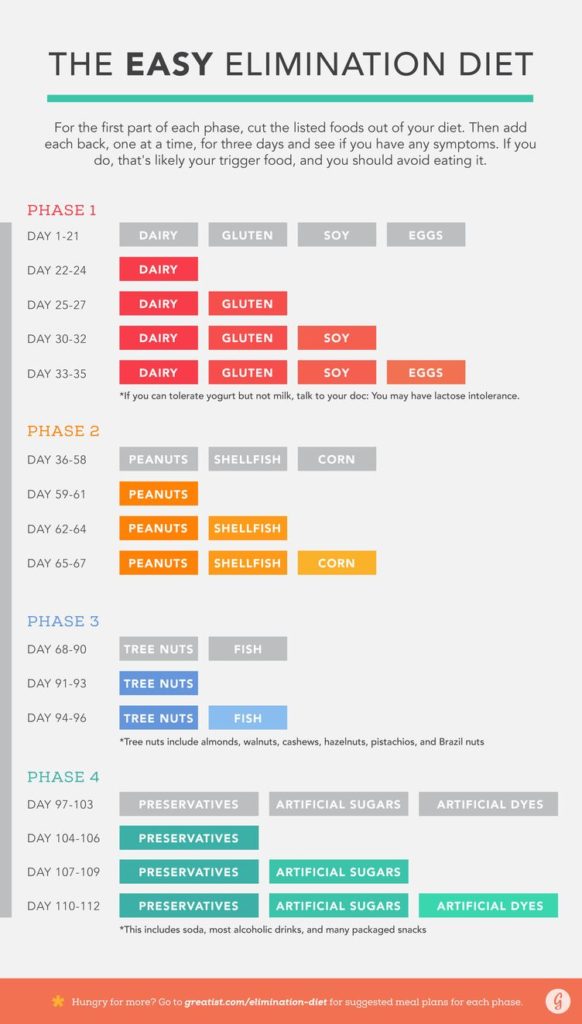 The Easy Elimination Diet
The Easy Elimination Diet
The plan below is a little different from a full elimination diet, where you remove 8+ food groups at the same time. For most people it’s almost impossible and of course cumbersome to avoid so many foods at once. This modified version is a lot easier because you eliminate three or four food groups at a time for 21 days since it takes about two to three weeks to notice any difference in your symptoms.
After those first 21 days of avoiding certain foods, you should feel better. That’s when you reintroduce the foods one by one, allowing at least three days before you reintroduce the next one so you’re able to notice any changes in how your body reacts to the food. If you add back all the eliminated food groups and have no symptoms, move on to the next step of the plan, when you’ll take out new foods. Continue doing this until a certain food group causes symptoms—that’s likely your trigger. You can stop the diet then, or continue if you think more than one food is at fault.
You’ll start by cutting out the statistically most common offenders, then move to less common ones, which should mean you can figure out your culprit faster. During each phase, make sure to read food labels to see if packaged goods contain any ingredients you are avoiding. These foods are hidden in a lot more things than you think! When you eat out, ask the restaurant staff what’s in dishes. (For example, are the vegetables cooked in butter or is peanut oil used for that stir-fry?)
You won’t have to worry about being hungry since you’re only avoiding some foods, and you can always chow down on lot of fruits, vegetables, and healthy fats. Vitamin deficiencies aren’t a concern either, since each phase is only 21 days.
Your Post-Plan Plan
Let’s say you found out gluten is a problem for you. Then you should avoiding eating it and anything using it as an ingredient so you don’t have to suffer from symptoms. Yes, this means asking about meals at restaurants and reading labels, but you don’t have to cut out foods “processed in a facility with gluten” since a trace won’t throw you into allergic shock. And you may even be able to enjoy some wheat on rare occasions without many issues—for those without celiac disease, once you give your immune system and gut a break from the food and it heals, small amounts will be tolerable for most. Hello, birthday cake!
Blog post written by Trainer, Sarah Oliver
VIM is now offering nutrition services with Trainer & Nutrition Coach, Christine Galvin!
Click below to find out how you can benefit from 1 on 1 Nutrition Coaching!
[button link=”https://vimfitness.com/nutrition/” text=”LEARN MORE” color=”green” size=”large” fullwidth=”true”]

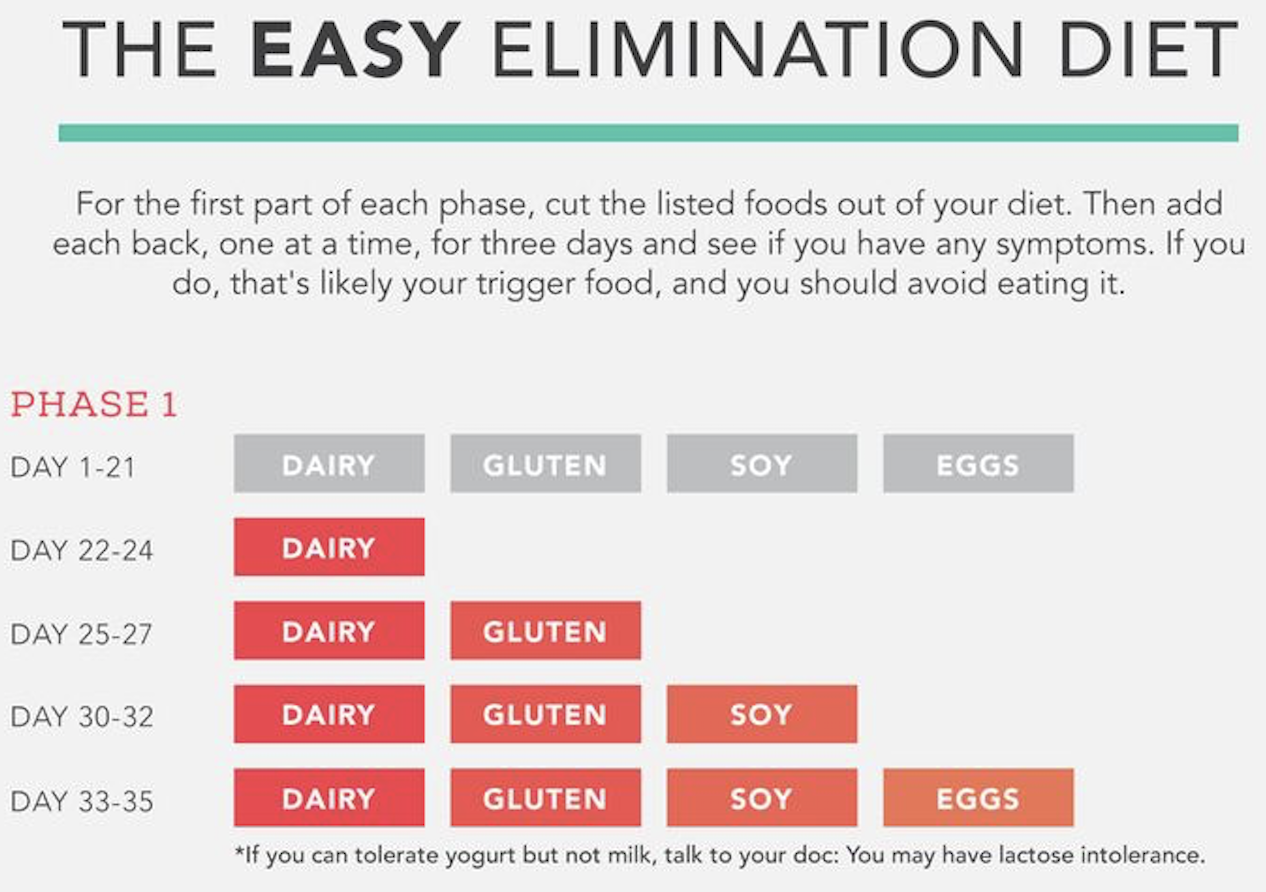
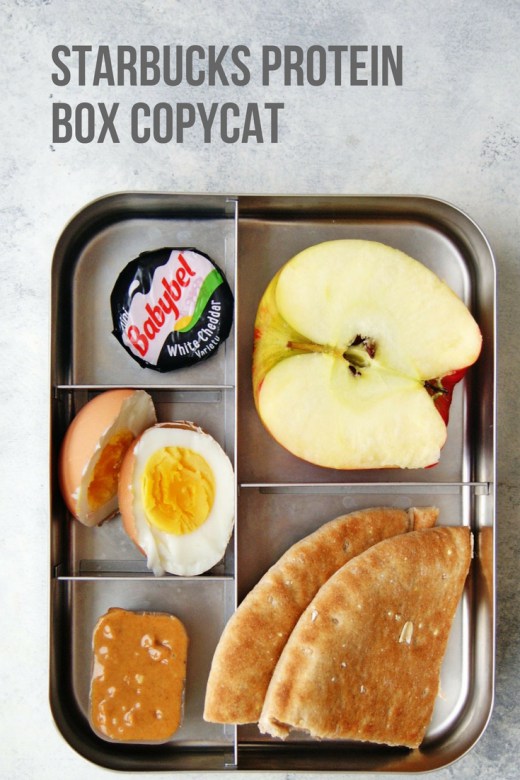
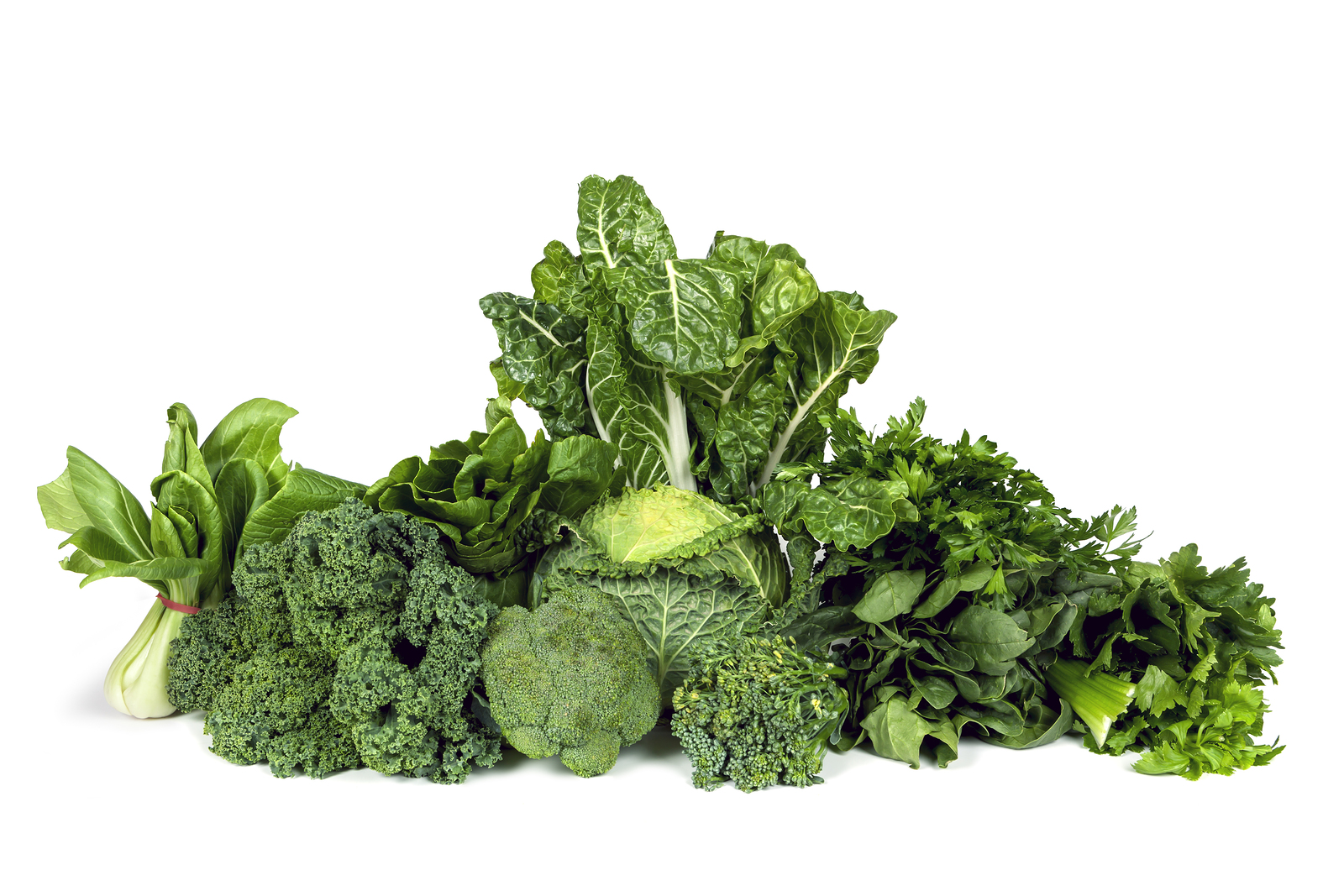

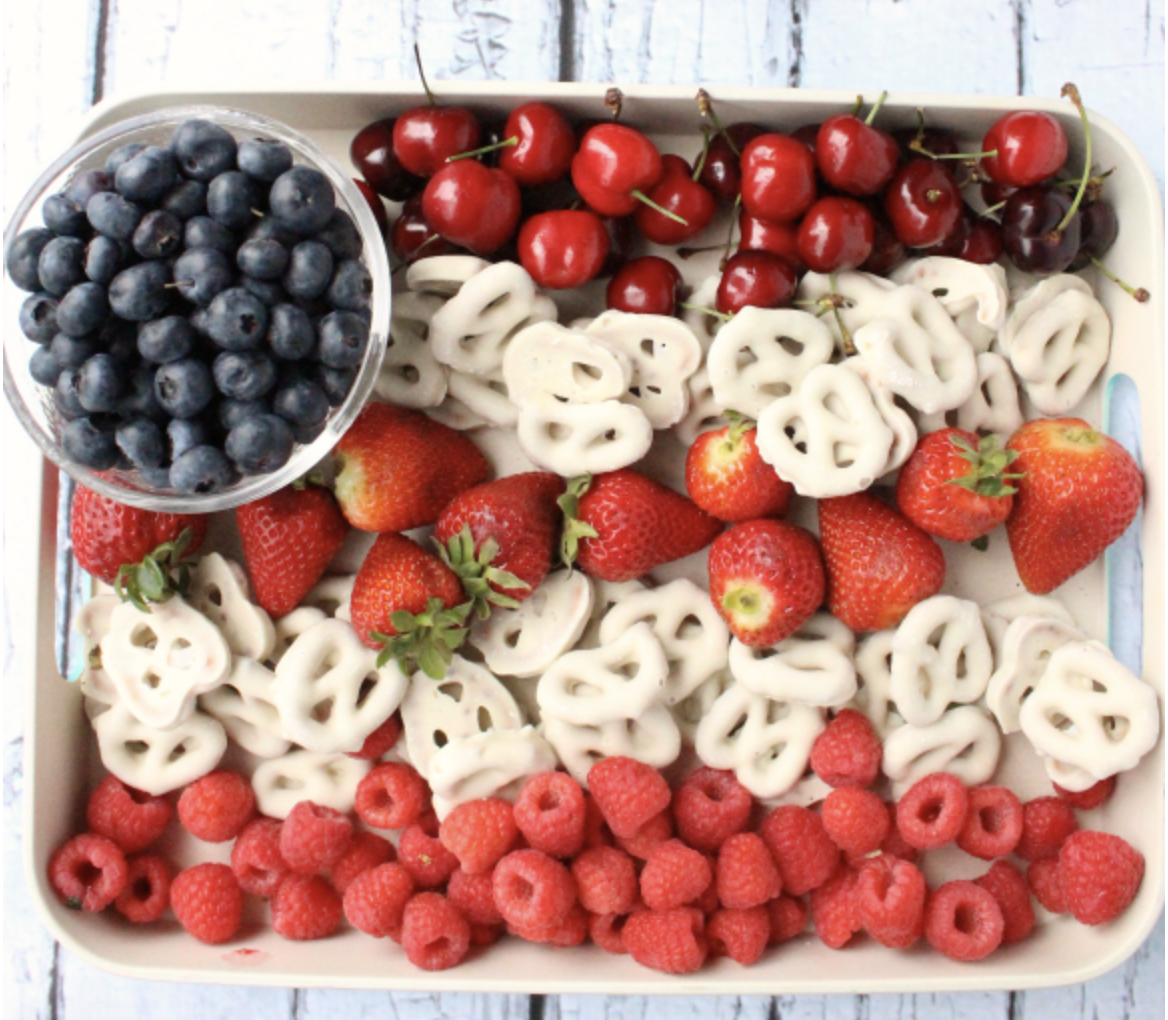
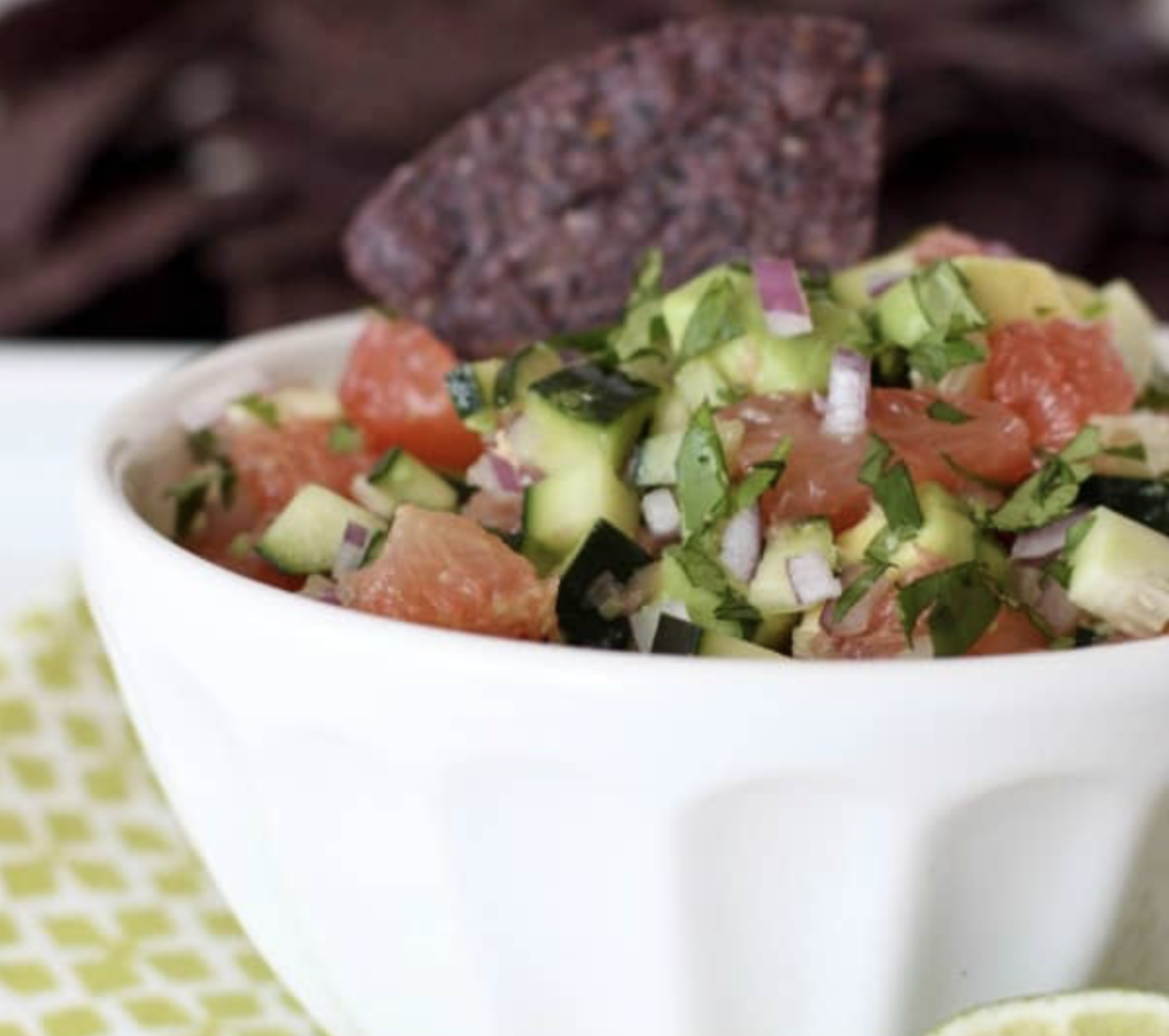
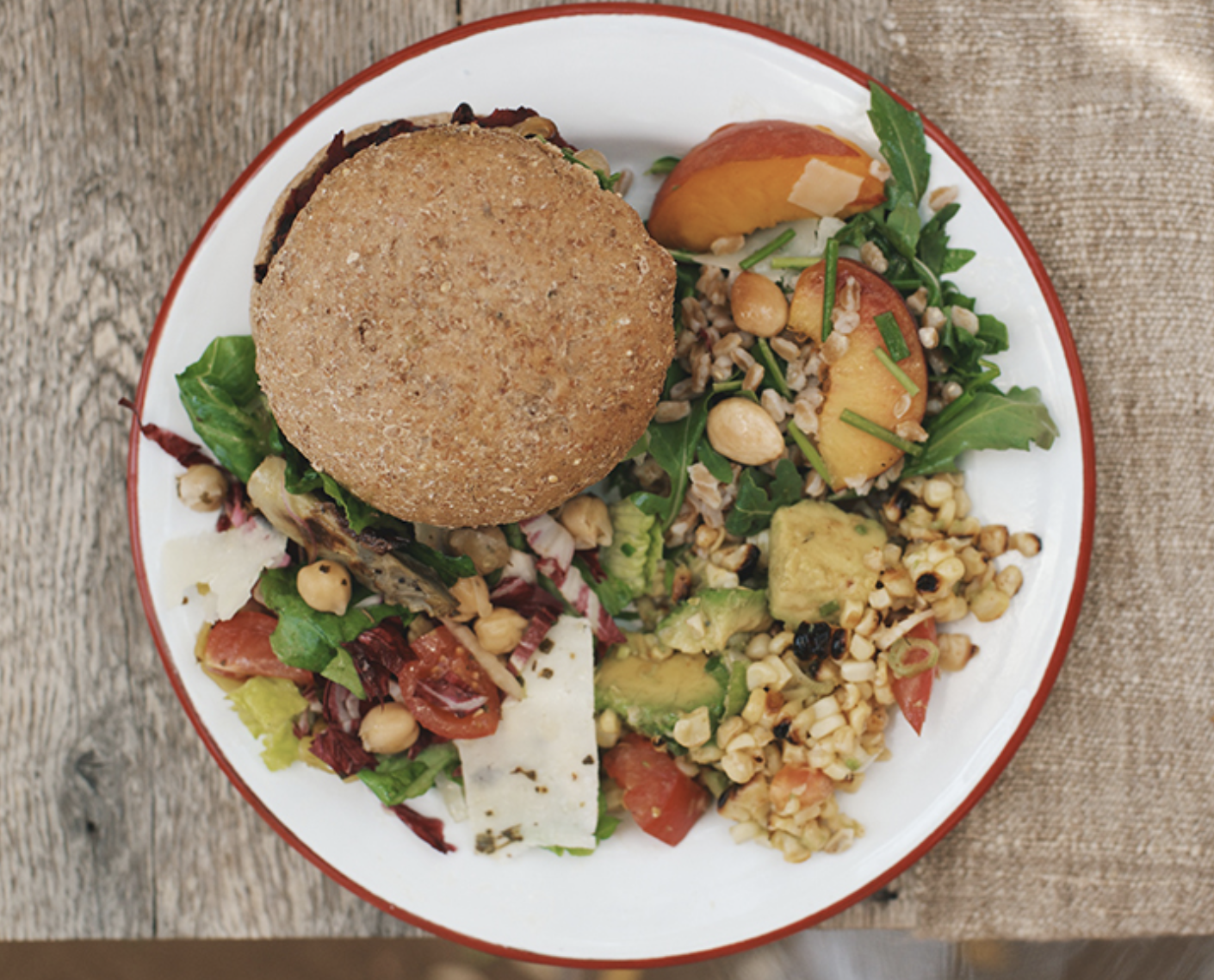
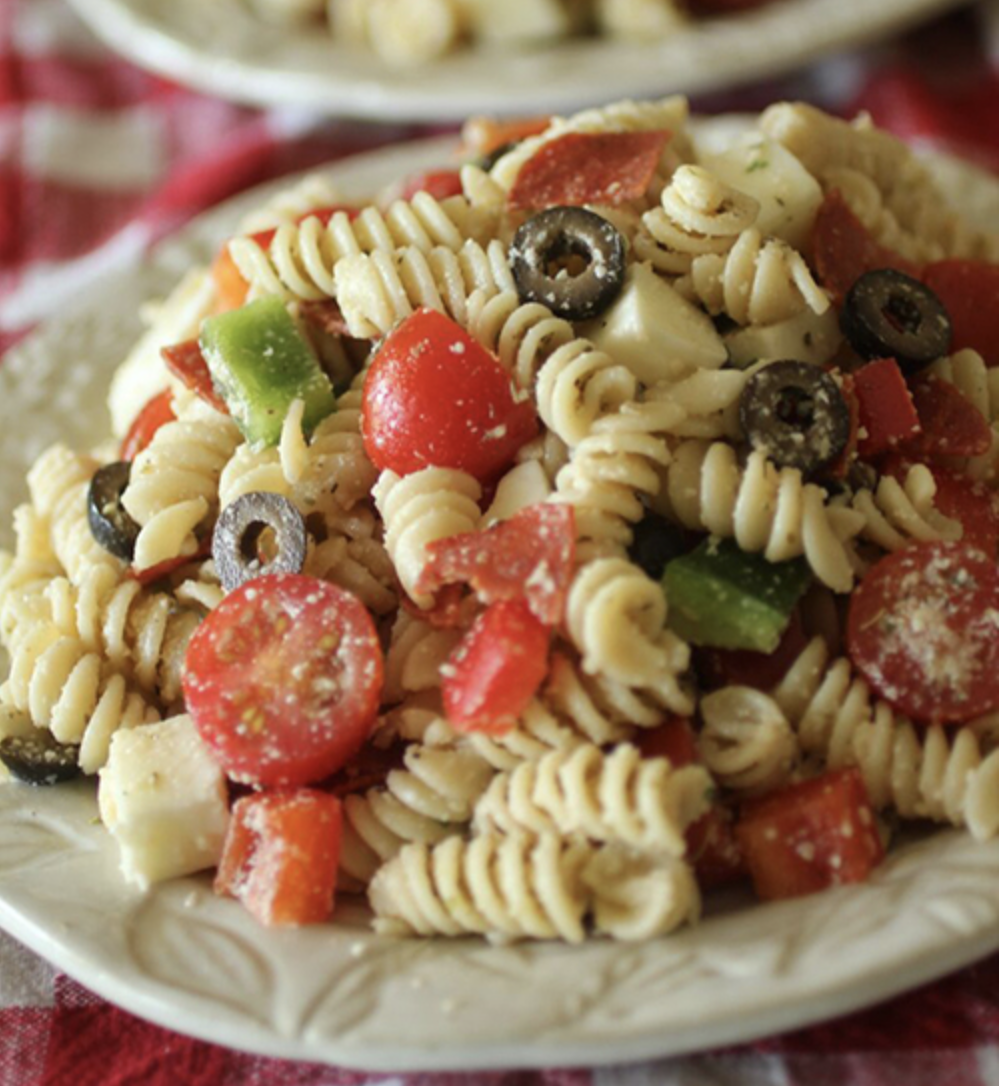
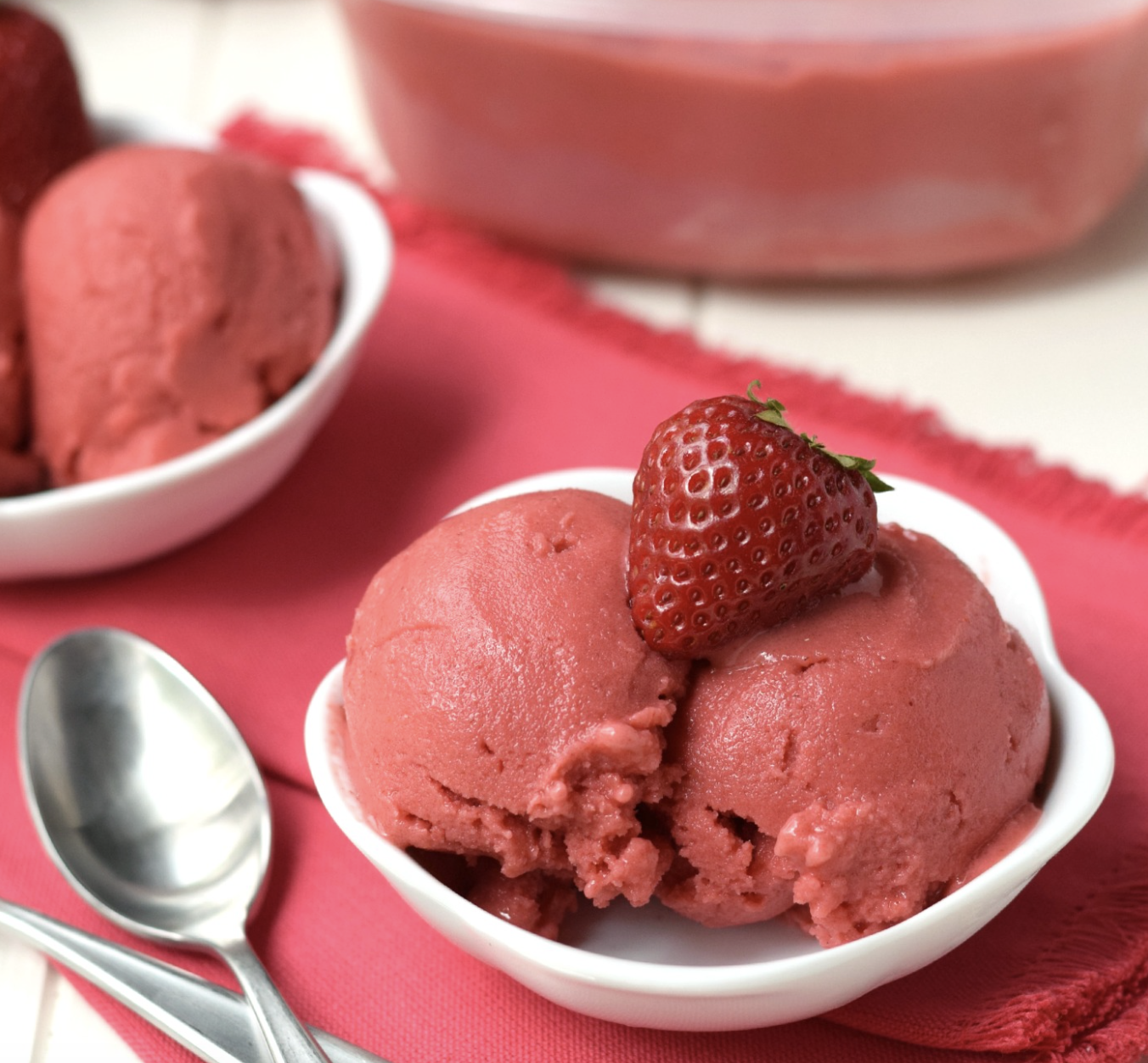

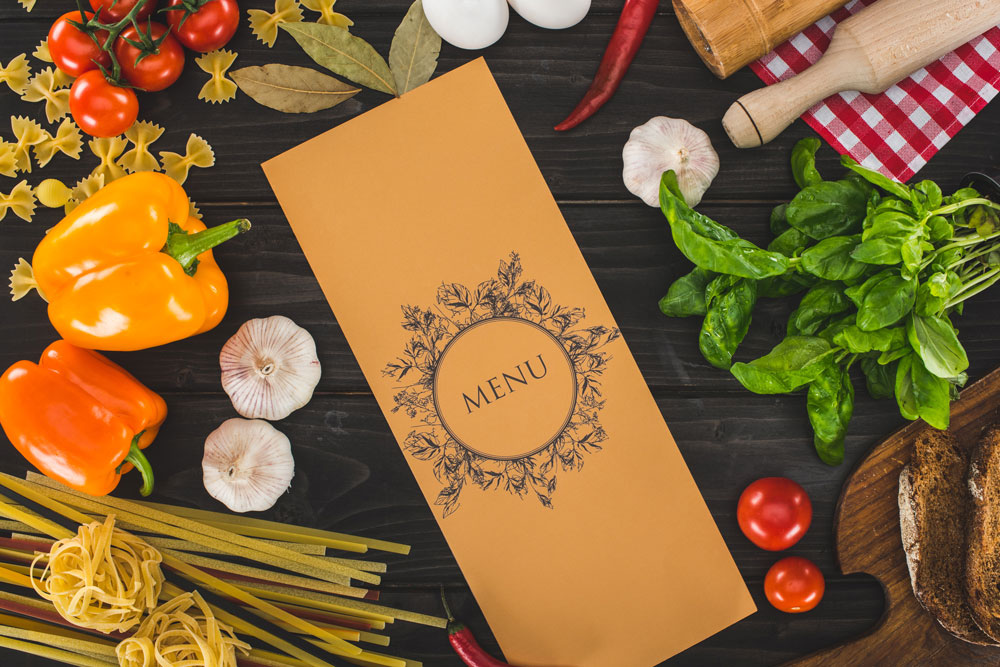


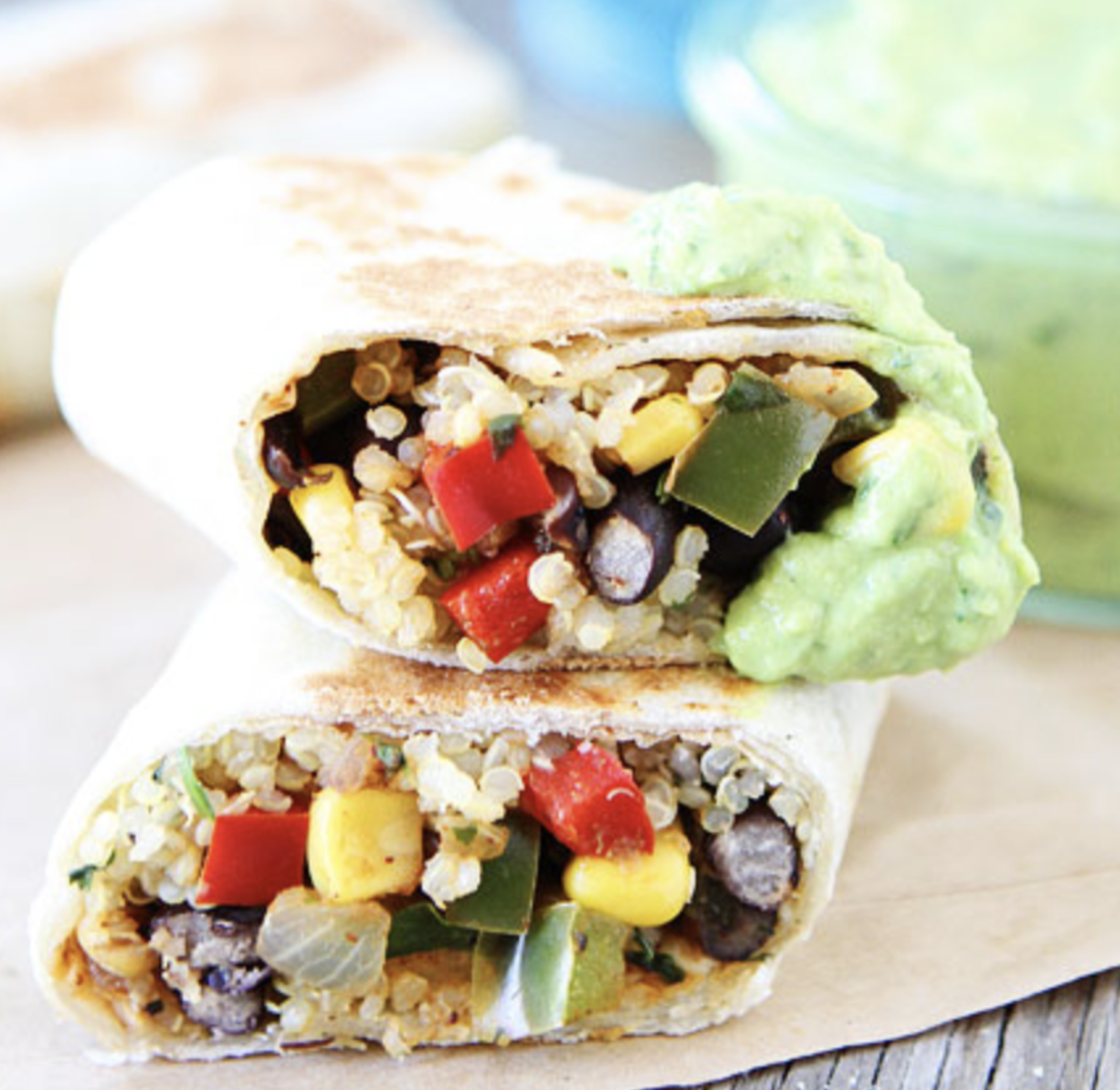

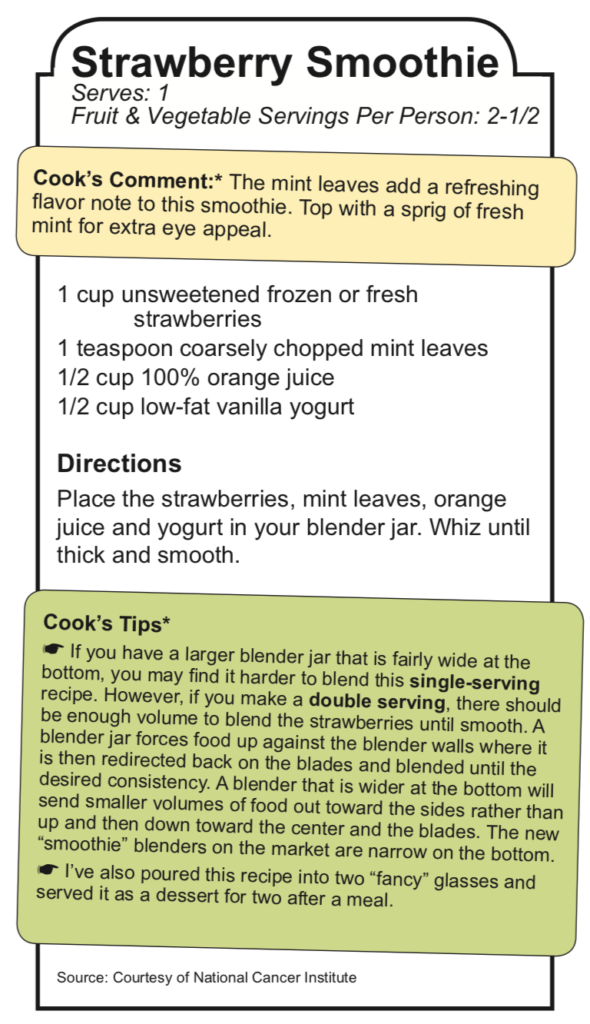 Purchase herbs close to the time you plan to use them. When growing herbs in your own garden the ideal time for picking is in the morning after the dew has dried but before the sun gets hot. This helps ensure the best flavor and storage quality.
Purchase herbs close to the time you plan to use them. When growing herbs in your own garden the ideal time for picking is in the morning after the dew has dried but before the sun gets hot. This helps ensure the best flavor and storage quality.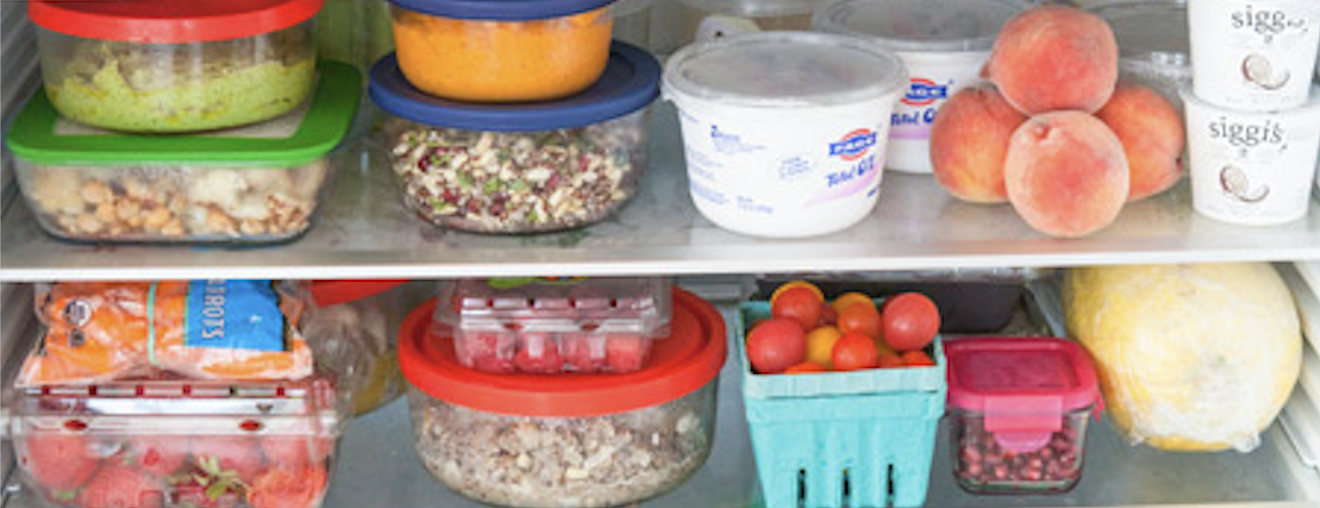
 1. Beans
1. Beans




